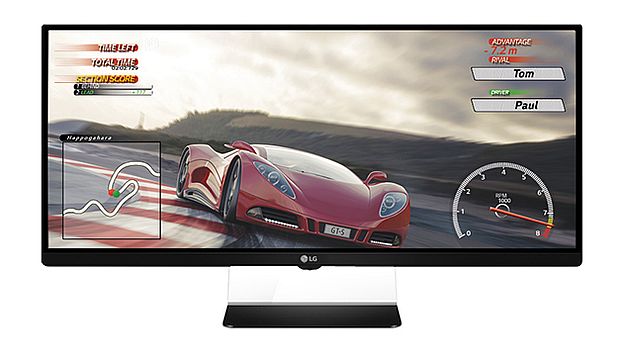The Consumer Electronics Show is a massive show of everything in any way related to consumer technology, and every year we get a glimpse of the new technologies that will shape our lives — and our businesses. There are a number of interesting new devices, technologies and services being announced this week at CES, and many of them affect the gaming industry either directly or indirectly. The [a]listdaily takes a look at what’s on display at CES and what it means to the game industry this year.
There’s plenty of new versions of old technology putting in an appearance in Las Vegas, as well as a few surprises. We can expect some of the products announced to never actually make it to market, some to appear and not sell very well, and a precious few to go on and become major sellers or harbingers of entirely new market segments. It’s this element of chance that brings people to Las Vegas every year, and we’re not talking about the casinos. Fortunes are made or lost on the CES show floor every year, so let’s take a look at some of the big bets being placed in 2015.
4K Is Rolling Out
The next big thing in displays is higher resolution, and it’s coming to displays of all sizes — from smartphones to tablets to laptops to monitors and to TV screens. The trend appears unstoppable, as every major manufacturer is showing off 4K or UHD displays, and some are even displaying prototypes of 8K displays. The technology is becoming standard on smartphones and tablets, and it’s quickly reaching notebook and laptop computers. The bigger news for gaming is that 4K monitors are rapidly dropping in price and gaining significant features, such as 60Hz or greater speeds (for fast-moving games), sync lock to eliminate screen tearing (both Nvidia and AMD have released this for their new graphics cards, and display makers are building it in to some displays), and even curved screens with wide aspect ratios.
The action is getting even hotter on TV screens, as makers like Sony, Samsung, Vizio and LG bid to offer 4K resolution in screens of all sizes, with prices ranging from less than a thousand dollars to north of $10,000. Still, content creation and distribution for 4K is lagging behind the displays themselves, though Amazon and Netflix are offering 4K streams (if you have enough bandwidth), and several companies are working on higher-capacity Blu-Ray discs or other distribution ideas for 4K video.
So far, though, even the newest consoles (the Xbox One and PlayStation 4) aren’t capable of generating a 4K signal, though that may be possible at some point in the future. (Perhaps a future console revision, if the format becomes popular enough ) The gaming action for 4K is first going to take place on PCs, as some game makers are already offering 4K display modes (such as the recently released Elite: Dangerous). Gamers will need to spend something more than $600 or so on a 4K monitor, and probably at least that much on a graphics card, to get a good 4K gaming experience. As in the past, though, the price of these new display technologies will quickly drop, and 4K gaming on a PC should become more common in the next year or two among the most motivated gamers.
New Chips Promise Better Mobile Games
Mobile gaming continues to advance in graphics power, as both Nvidia and Intel showed off their latest chips to eager crowds at CES. Nvidia rolled out its latest Tegra chip, the Tegra X1, which the company said possesses a teraflop of processing power — a mark that supercomputers were boasting about little more than a decade ago. Nvidia claimed that the Tegra X1, which combines an 8-core 64-bit CPU with 256 GPU cores, is more than twice as fast as Apple’s latest A8X chip at some graphics functions. The Epic Games’ “elemental” demo, developed to show off high-end PC graphics cards in 2012, was shown running on a Tegra X1 — with just a fraction of the power required for a PC graphics card.
Intel wasn’t about to be outdone in the processor department, as the company is racing to catch up with the fast-moving mobile market that is now dominating personal computing. Intel’s Broadwell chips are finally shipping, using a 14nm process technology that puts more than 1.3 billion circuits on a tiny chip. The Broadwell chips promise battery life improvements of between 20 percent and 30 percent over the latest Haswell chips, so that a 15W Broadwell chip will last 90 minutes longer than its predecessor when playing video. 3D graphics have improved by 22 percent, while video encoding has been improved by over 50 percent. The net result is notebooks and tablets that can last longer and display better graphics faster, making Windows more mobile than ever — and thus PC gaming more mobile than ever before.
Virtual Reality Gets More Real
So far at CES we’ve been treated to a number of interesting extensions of VR technology, but we haven’t yet heard from either Sony or Oculus about product introductions in the near future. Still, we have an interesting controller (the 3DRudder) for VR, letting you use your feet to move around a virtual world. Perhaps even better for VR users, the clever folks at Leap Motion have introduced a way to quickly switch from VR to seeing the world outside the googles, so you can interact with the real world when you need to without struggling to take off your VR headset.
The sleek and clever Avegant headphone-like wearable display has finally been given an arrival date, and you’ll be able to acquire one this fall. It’s not exactly VR, but it does look pretty darn cool — plus you can watch and listen to whatever video you want without anyone else intruding or spying.
